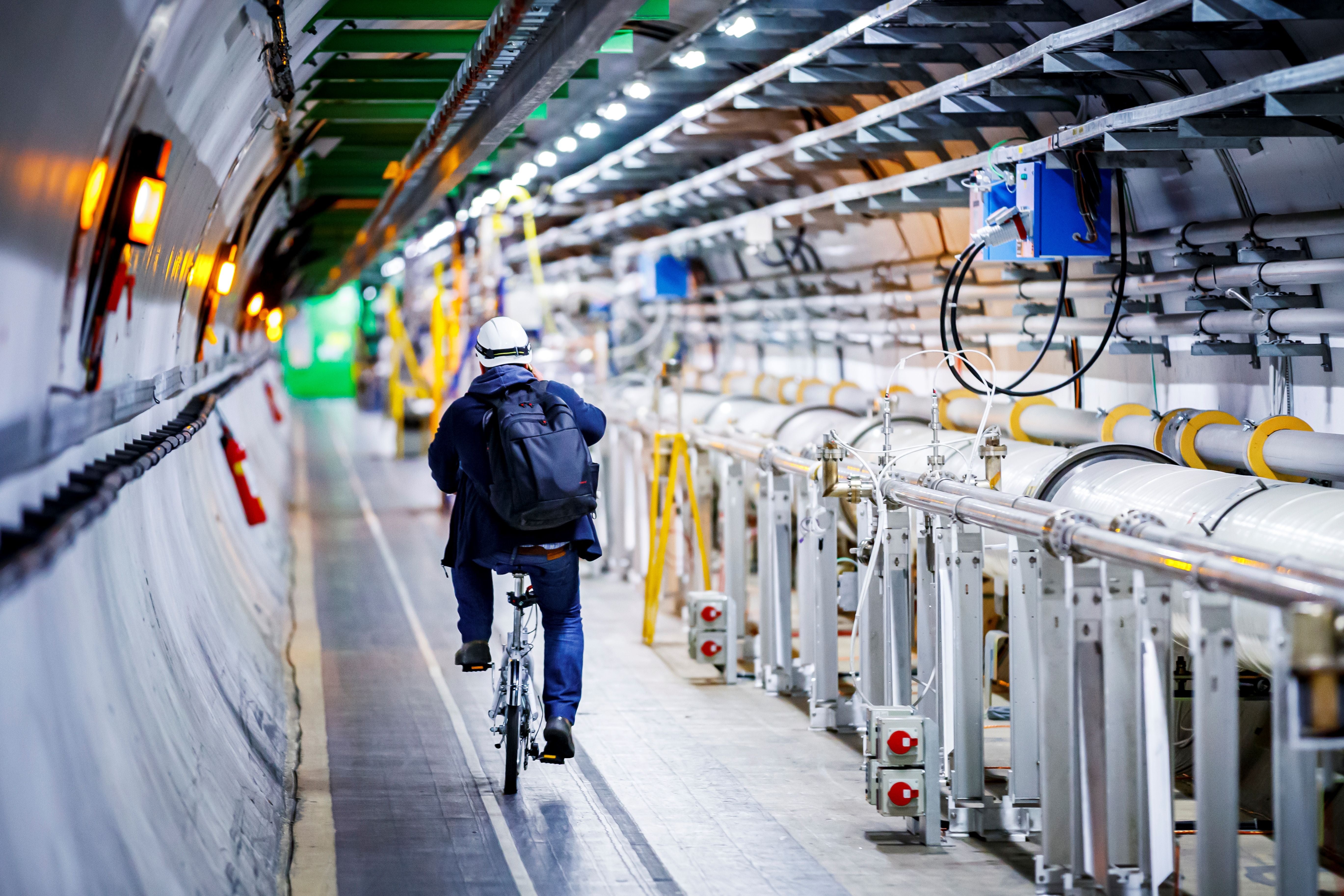The Large Hadron Collider is firing back up: Could this mean the end of the world?
The Large Hadron Collider won’t rip a hole in reality, but it may help scientists uncover the secrets of the universe

After a four-year hiatus, the Large Hadron Collider (LHC) is firing up again on Tuesday, and despite rumors you may have heard on the internet, it will not create a trans-dimensional cross-rip, a black hole or any other techno-babbling apocalypse of science run amok.
As astrophysicist Katie Mack noted Tuesday on Twitter, every time the LHC fires up, “I hear from people who are nervous about some kind of disaster, presumably due to alarmist science fiction,” she wrote. “Allow me to reassure you: even though the LHC is the most powerful particle collider on Earth, it is barely a game of marbles on the cosmic scale.”
A project of the European Organization for Nuclear Research, or Cern, the LHC is a ring of electromagnets 17 miles in circumference buried under France and Switzerland near Geneva used to accelerate beams of particles to incredibly high velocities and then smash them together to study the resulting piece. First smashing protons for science back in 2009, the LHC has led to the discovery of more than 50 new subatomic particles, and most famously the detection of the long hypothesized Higgs boson, also known as the “God particle,” in 2012.
Early LHC collisions took place at around one to 2 trillion electron volts, a measurement of the energy imbued in a particle by accelerating it based on the energy gained by an electron accelerated by a potential of one volt. The LHC has run through two previous cycles of experiments, collecting immense amounts of data from 2009 through 2013, and then from 2015 through 2018.
The new and third cycle of LHC experiments starting Tuesday will feature particles colliding at a record-breaking 13.6 trillion electron volts.
But while that seems like a lot, it’s still relatively insignificant in terms of what nature does all the time, according to Dr Mack.
As the Cern website notes, one trillion electron volts is roughly equivalent to the energy released by a flying mosquito.
So while the LHC won’t rip the fabric of time and space, it could help scientists rip the veil off some of the secrets of the universe. A Cern blog post notes scientists will be using the LHC to study the more subtle interactions of the Higgs particle as well as searching for signs of elusive dark matter, a mysterious entity that scientists know makes up about 27% of stuff in the universe, but have never directly observed.
Join our commenting forum
Join thought-provoking conversations, follow other Independent readers and see their replies
Comments